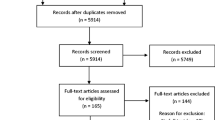Abstract
Intelligent environments are increasingly becoming useful scenarios for handling computers. Technological devices are practical tools for learning and acquiring clinical skills as part of the medical training process. Within the framework of the advanced user interface, we present a technological application using Leap Motion, to enhance interaction with the user in the process of a laparoscopic surgical intervention and integrate the navigation through augmented reality images using manual gestures. Thus, we intend to achieve a more natural interaction with the objects that participate in a surgical intervention, which are augmented and related to the user’s hand movements.





Similar content being viewed by others
References
Duan-Yu, C., Sheng-Wen, S., Hong-Yuan, L. M., Human Action Recognition Using 2-D Spatio-Temporal Templates. In: IEE International Conference on Multimedia and Expo, 667–670, 2007.
Jansen, F. W., Kolkman, W., Bakkum, E., Kroon, C. D., Trimbos-Kemper, T. C., and Trimbos, J. B., Complications of laparoscopy: an inquiry about closed- versus open entry technique. Am. J. Obstet. Gynecol. 190:634–8, 2004.
John, N., Design and implementation of medical training simulators. Virtual Reality. Springer-Verlag, 2008, pp. 269–279.
Molloy, D., Kaloo, P. D., Cooper, M., and Nguyen, T. V., Laparoscopic entry: a literature review and analysis of techniques and complications of primary port entry. Aust. N. Z. J. Obstet. Gynaecol. 42:246–54, 2002.
Li, W., Zhang, Z., Liu, Z., Action recognition based on a bag of 3D points. En Comput. Vis. Pattern Recognit., 9–14, 2010.
Web oficial de Leap Motion para desarrolladores. https://developer.leapmotion.com/. Lastest access (Nov. 2015).
Weichert, F., Bachmann, D., Rudak, B., and Fisseler, D., Analysis of the accuracy and robustness of the leap motion controller. Sensors 13(5):6380–6393, 2013.
Guna, J., Jakus, G., Pogačnik, M., Tomažič, S., and Sodnik, J., An analysis of the precision and reliability of the leap motion sensor and its suitability for static and dynamic tracking. Sensors 14(2):3702–3720, 2014.
Hodson, H., Leap motion hacks show potential of new gesture tech. New Sci. 2013(218):21, 2013.
Author information
Authors and Affiliations
Corresponding author
Ethics declarations
Conflict of interest
The authors declare that they have no conflict of interest.
Additional information
This article is part of the Topical Collection on Education & Training
Rights and permissions
About this article
Cite this article
Juanes, J.A., Gómez, J.J., Peguero, P.D. et al. Digital Environment for Movement Control in Surgical Skill Training. J Med Syst 40, 133 (2016). https://doi.org/10.1007/s10916-016-0495-4
Received:
Accepted:
Published:
DOI: https://doi.org/10.1007/s10916-016-0495-4




